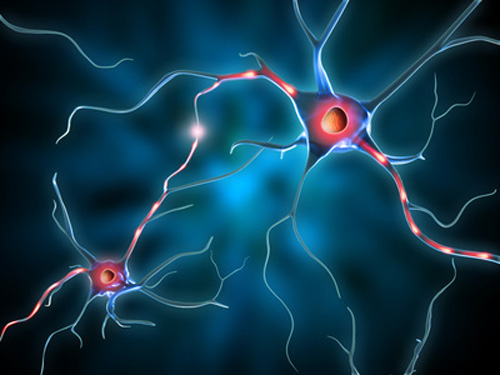Patricia F. Fitzpatrick Dimond Ph.D. Technical Editor of Clinical OMICs President of BioInsight Communications
Firms vie for success in clinical development, but basic research is still uncovering important details.
In February Danish company NeuroSearch announced positive results from its Phase III trial testing Huntexil as a treatment for symptoms of Huntington disease (HD). The results demonstrated that “Huntexil can provide significant benefits to Huntington patients on symptoms not reached by any current treatment, and this without any trade-offs in terms of safety or worsening of any other disease symptoms,” said NeuroSearch CEO, Flemming Pedersen. Analysts predicted a 2011 market launch for the drug, and NeuroSearch stock rose nearly 100%.
But on April 28, the firm’s shares plummeted 41% just as quickly as they went up. “Significance value for the study’s primary endpoint, the modified motor score (mMS) of p=0.042, did not meet the prespecified level of p< 0.025. With inclusion of the clinically relevant CAGn adjustment, the p-value is < 0.02.” In other words, a new analysis of the Phase III data showed that the endpoint had been missed. CMO Dieter Meier, M.D., departed post the data debacle, and the company continues to try to put the best face on the data.
The company says that the new data doesn’t change the findings that Huntexil demonstrated a superior treatment effect in patients with an elevated CAGn score, considered a surrogate marker for rate of progression. And while active drug development continues, with a range of therapeutics being tested to treat the symptoms of HD, the basic mechanisms behind the disease are still being worked out. Recent discoveries may overturn currently held ideas about its pathogenesis as well as present unique drug targets.
Drug Candidates
Huntington disease is caused by an expansion mutation beyond 36 CAG (cytosine-adenine-guanine) repeats in the IT15 gene, which encodes the huntingtin protein. The CAG score refers to the number of expansions in the codon; the more CAG repeats there are in the gene, the faster clinical symptoms progress. NeuroSearch’s Phase III study showed that the CAG-dependent rate of motor symptoms progression that was seen in the placebo group was not apparent among Huntexil-treated patients.
If NeuroSearch’s finding that Huntexil can delay disease progression in patients with elevated CAGn scores holds up, the financial community and regulatory agencies will be a lot more willing to cut the firm a break despite its statistical blunder.
To date treatment for HD has been supportive only, aimed at suppressing the uncontrolled body movements and progressive cognitive decline characteristic of the disease. The only drug approved in the U.S. for treatment of HD symptoms is Regulin. It was formerly an antipsychotic but now is primarily used in the treatment of various movement disorders including tardive dyskinesia. Regulin works by inhibiting vesicular monoamine transporter 2, a transporter in the central nervous system that moves cytoplasmic dopamine into synaptic vesicles for storage and release.
Huntexil acts as a dopaminergic stabilizer to either enhance or inhibit dopamine-dependent functions in the brain depending on the initial level of dopaminergic activity. Thus, according to the company, there are few or no physiological effects when dopamine levels are normal.
Apart from dopamine blockers and stabilizers like Regulin and Huntexil, treatments in development for HD range from nutritional supplements to antiapoptosis compounds. Even sirtuins are in the HD game, with Siena Biotech reporting in January that its orally active, selective SIRT1 inhibitor SEN0014196 had obtained orphan drug status from the FDA as well as the EMEA. At the time, the company also initiated a Phase I trial in 96 volunteers.
Siena’s drug candidate inhibits the acetylase activity of SIRT1, which appears to modify acetylation of the huntingtin protein. This enhances clearance of the mutated protein but not the normal version of the protein. Siena said that it has performed a series of unpublished studies in which it found the inhibitor to be neuroprotective in cell and animal models. In a mouse model, symptoms were ameliorated and survival times were increased.
Why Brain Damage Is Localized to One Area
The basic research front may also be turning a corner in terms of understanding the mechanisms behind this disease. A major mystery in HD has been that neuronal destruction associated with the presence of the huntingtin protein occurs only in a specific brain area, the corpus striatum, even though the mutant protein is expressed throughout the body.
But in June 2009, scientists in the laboratory of Solomon Snyder, M.D., at Johns Hopkins University reported that the mutated huntingtin protein (mHtt) binds to a protein called Rhes that is localized in the corpus striatum. Tests in human and mouse cells revealed that Rhes interacted with both healthy and mutant versions of the huntingtin protein but bound much more strongly to mHtt.
“Touching or binding is one matter, but death is altogether another,” said Dr. Snyder, so the next step was to see whether and how Rhes plus mHtt could kill brain cells in the corpus striatum. The researchers added different combinations of normal and mHtt and Rhes and examined the cells over a week. While each protein alone didn’t change the number of cells in the dishes, when both mHtt and Rhes were present in the same cell, half the cells died within 48 hours.
“Here’s the Rhes protein, we’ve known about it for years, nobody ever really knew what it did in the brain or anywhere else, and it turns out it looks like the key to Huntington disease,” Dr. Snyder noted. The researchers believe that this discovery is a clear, simple molecular mechanism that accounts for the neurotoxic mechanism of HD.
Patricia F. Dimond, Ph.D., is a principal at BioInsight Consulting. Email: [email protected].



